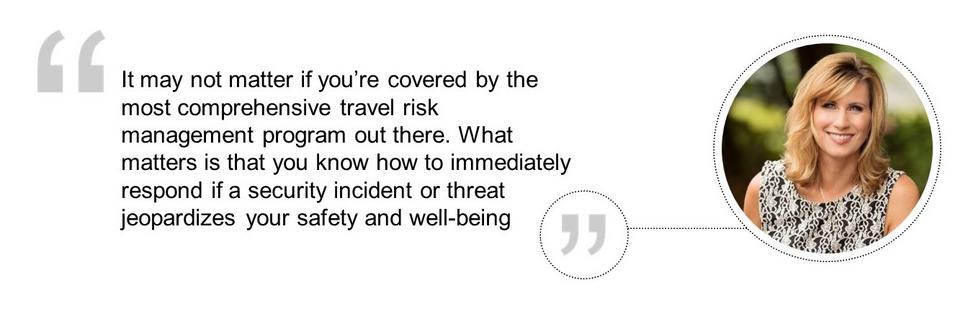Duty of Care
Are Companies Doing What They Can to Safeguard Female Travelers?
In the past two weeks, thousands of business travelers had to cancel or rebook travel due to weather-related natural disasters raging across the Atlantic and Pacific Oceans. I’m one of those travelers, yet because of the storm warnings, my female colleague and I could change the location and timing of our travel plans. Imagine if we weren’t so lucky. We’ve all seen images of the tragic impact of Hurricane Florence on the U.S. Eastern Seaboard and Typhoons Mangkhut and Barijat across the Philippines, Hong Kong, and Southern China.
While natural disasters pose a serious, high-level safety threat to all travelers, we’re learning that women, in particular, can face other serious safety threats like assault, theft, sexual harassment, or culturally threatening situations while on the road for business. Educating ourselves about our companies’ duty of care policies is proving more important than ever. Duty of care is an organization’s moral and legal obligation to take serious responsibility for the safety of its traveling employees, and a travel risk management program is the response to that obligation—in the form of actionable policy.
Are companies protecting their female travelers?
Research this year from AIG Travel Inc., and the Global Business Travel Association (GBTA) in partnership with WWStay, shed light on some of the gaps in travel risk management policies for female travelers.

While research showed that travel managers may offer safety and security resources through third-parties, such as 24-hour emergency hotlines, only 44% said their companies book women into rooms with additional safety features like double locks and 24-hour security. Three out of five said they “rarely” or “never” offer chauffeured transportation services at travel destinations, even though taxi rides and airport transfers were noted as particularly hostile environments for women.
Companies can take proactive steps to bolster their duty of care obligations for female travelers in specific ways:
- Prepare your female employees in advance: Do they understand the legal, cultural, or even religious restrictions they may face at their destination?
- Provide local destination guidance information: What are the lodging, meeting, and transportation safety precautions in place, and how can they get help when they need it?
- Offer emergency travel service resources: US Department of State, Centers for Disease Control and Prevention (for example), and technology assistance in the form of apps and alerts.
- Share critical behavioral safety tips: What not to wear in certain countries, how to be situationally alert to surroundings and others at all times, and tips for protecting their person and information.
As a frequent traveler, I’m a passionate advocate of self-education. It’s actually not possible for our companies to completely eliminate risk for us while we’re on the road because we live in an unpredictable world. In the end, it may not matter if you’re covered by the most comprehensive travel risk management program out there. What matters is that you know how to immediately respond if a security incident or threat jeopardizes your safety and well-being.

In my next blog, How Can Women Create Their Own Safe Business Travel Experience?, I’ll share a simple checklist of the most important items to tick down through in advance of your stateside or international travel, and how to stay safe once you’re at your destination. These tips are especially helpful for the “unmanaged” female business traveler, those responsible for making their own arrangements without the assistance of a company travel program.
I’m also excited to quote Kathy Leodler, CEO of security firm Rampart Group and former FBI special agent and corporate security director, as she shares the smartest things we can do no matter where we are in the world.
1 Research conducted by Global Business Travel Association (GBTA) in partnership with WWStay (2018)
